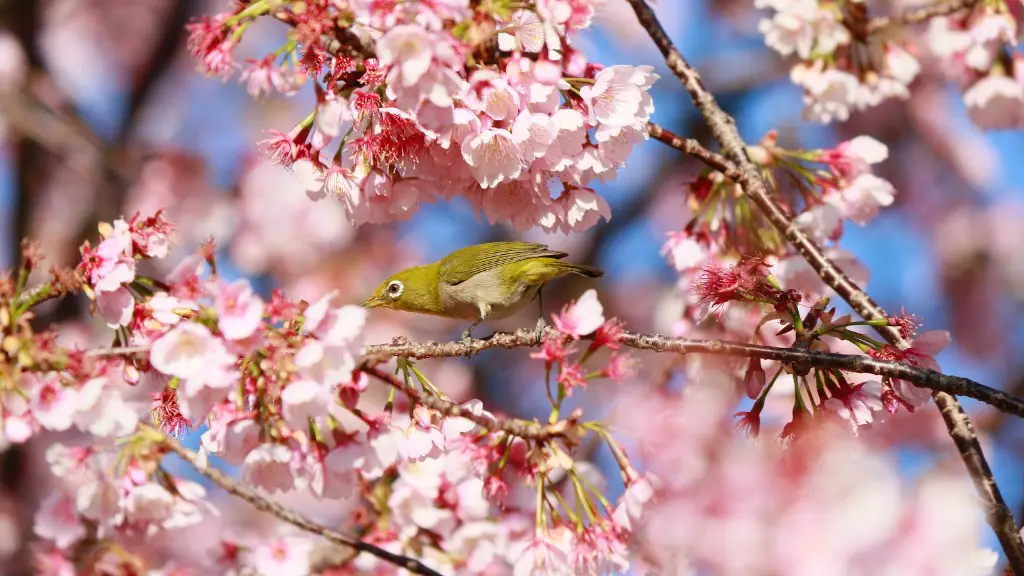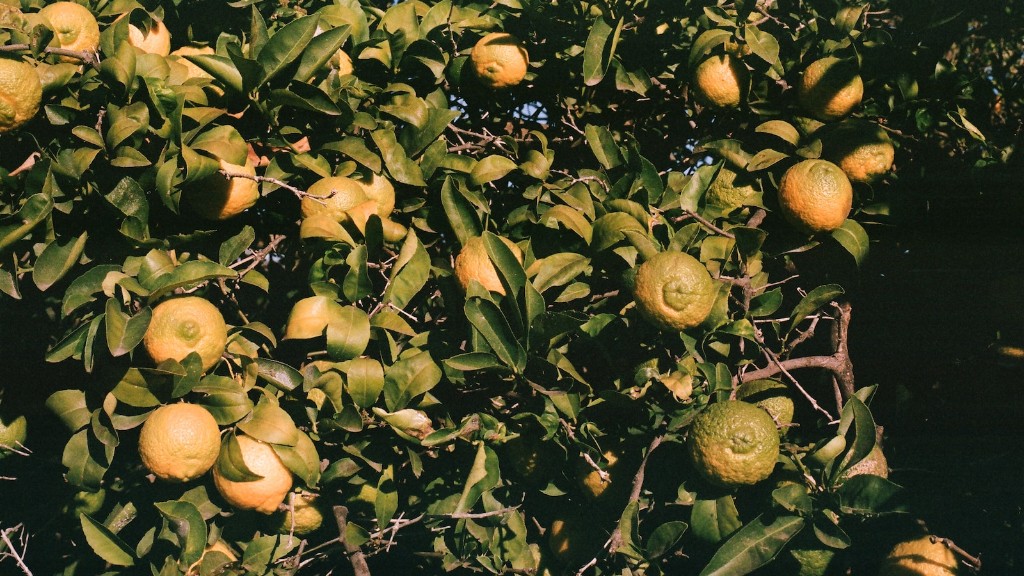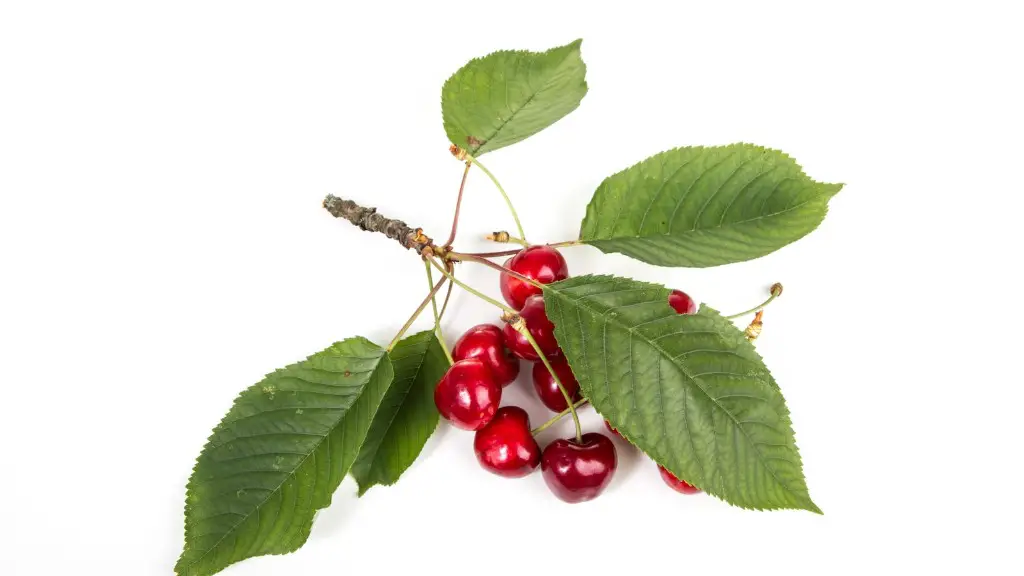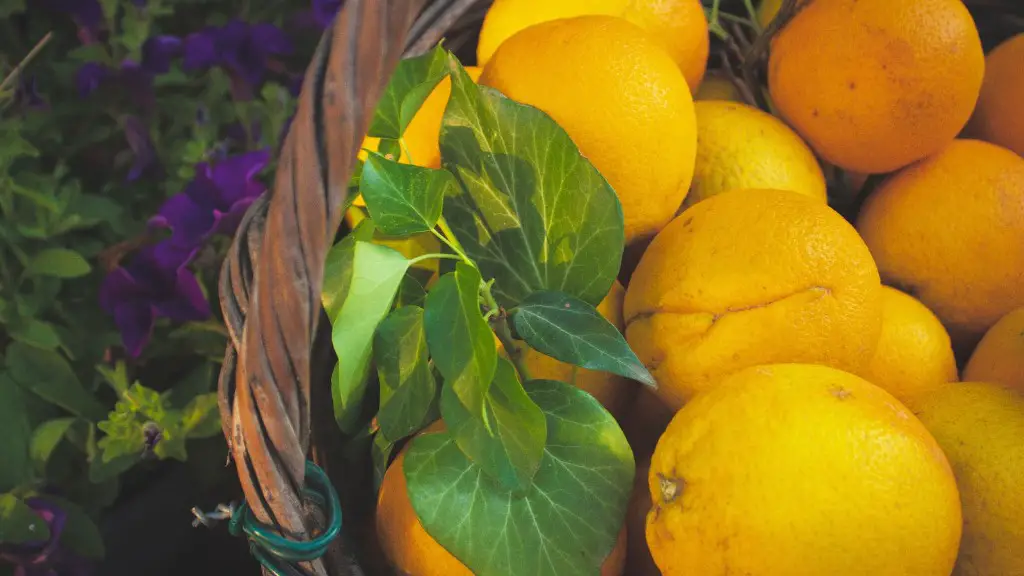Avocado trees (Persea americana) are a fantastic addition to any garden providing attractive foliage and delicious fruit. Planting an avocado tree in your garden is a great way to enjoy avocados year round, without relying on the supermarket.
When selecting a pot for an avocado tree there are some important factors to consider. Firstly, the size of the pot will determine how big the avocado tree will get and how successful it is at producing fruit. Too small a pot and the tree won’t be able to accommodate its vigorous roots, and too large a pot and it won’t have enough nutrients to support a healthy growth.
According to the experts, a large pot is always better. You should look to source a plastic pot that is at least 30 inches in diameter and 24 to 36 inches deep. The wider the pot, the greater the availiable space for the root system to expand. A deep pot will provide the necessary drainage for the avocado tree.
When planting the tree in the pot, it is important to use a well-draining soil, such as a potting mix specifically designed for container culture. Make sure the avocado tree is planted at the same depth as it was in its previous pot, and fill the pot with soil until the soil reaches about two inches from the top. Water well to pack the soil and settle the roots.
After planting, you will need to water your avocado tree regularly. The soil should be kept consistently moist, but not soggy. The frequency of watering will depend on the size of the pot, the time of year, and the variety of avocado. It is important to ensure that the pot is draining well and not retaining too much water.
Fertilizing your avocado tree is also important. The best time to fertilize is in the spring and summer months. Fertilize with a balanced liquid fertilizer, either once a month or every two weeks. Make sure to follow the directions on the packaging and fertilize at half strength. Finally, avocado trees need lots of sunlight to thrive, so make sure the plant is in an area with 6-8 hours of sun per day.
Container Types
When selecting a pot for your avocado tree there are a range of materials to choose from. Plastic is the most popular option, but bonsai-style clay pots and terracotta are also suitable alternatives. Wooden containers are not recommended as the wood will eventually degrade and become waterlogged. The pot should also have several drainage holes to allow water to pass through.
If you are growing your avocado tree indoors, it can still thrive in a large pot. If you plan to keep your indoor avocado tree in the same pot for a number of years, choose one made from terracotta or a heavy plastic. Unlike lighter plastic pots, terracotta and heavier plastic pots hold the heat better and help to maintain steady soil temperatures, which is important during winter.
It is also possible to grow avocado trees in a hanging basket or in a soil sack. Whichever material you decide to use, make sure the pot has adequate drainage.
Soil Requirements
Avocado trees need soil that is well-draining and moisture-retentive. To achieve this, it is best to mix two parts of a good-quality potting soil with one part sand and one part perlite or vermiculite. This will help to create a soil that is both light and airy, and also retains moisture.
A water-soluble fertilizer should also be added to the potting mix before planting the seedling. This will give the seedling a good start and provide the avocado tree with all the essential nutrients it needs.
It is important to remember, however, that avocado trees will also need extra care over time. They need to be fertilized every few months and require regular pruning to keep them healthy and looking their best.
Pruning
Pruning an avocado tree is essential to maintain a strong, healthy tree. Pruning encourages fruiting and helps to keep the tree shapely and compact. Prune your tree back in early spring when it is still in a dormant state. Prune back unproductive branches and remove any dead or diseased wood. Make sure not to prune off too much and keep the crown of the plant nice and symmetrical.
If you plan on growing your avocado tree outdoors, you should also consider planting it in a location that offers some protection from wind and can be partially shaded. This will help to keep the roots cool during hot summer months and will reduce the chance of sunburn.
Air Circulation
Avocado trees require good air circulation for their healthy growth. Make sure the pot has ample room for the tree to grow, and that there is good air circulation around the pot. This will help the roots to breath and will reduce the risk of disease and mold.
It is also important to remember that avocado trees require temperatures of around 65-80 °F for healthy growth. If temperatures rise higher than this, the tree may struggle to survive and produce fruit. Consider planting your tree in a spot that is partially shaded and sheltered, such as under trees or in the corner of a wall.
Watering
Avocado trees require regular and consistent watering. The soil should be kept moist but not soggy, and the frequency of watering will depend on the season and variety of tree. During the hot summer months, water your avocado tree twice a week. If there is an excessive heat wave, you may need to water your avocado tree daily.
If you are growing your avocado tree indoors, you should mist the leaves often to encourage healthy growth. This will also help to reduce the risk of pests and diseases.
Harvesting
Avocado trees typically take about four to five years to produce fruit. When the fruit is ripe, it will fall from the tree. If the fruit does not fall, you can gently twist it off the stem. However, it is important not to pull the fruit off as this can cause damage to the tree.
Avocado trees can be unpredictable, so it is possible that they may not produce fruit every year. If your tree is not bearing fruit, it may be lack of pollination, poor nutrition, extreme temperatures or inadequate irrigation. Too much nitrogen in the soil can also cause the tree to produce leaves but no fruit.
Pest & Disease Prevention
Pests and diseases are a common problem with avocado trees. The best way to prevent them is to keep the leaves and soil in a healthy condition. It is important to prune back branches to allow for better air circulation, and to keep the soil evenly moist.
Choose an appropriate fertilizer for your tree and apply it in the spring. Check the soil regularly for weeds, pests, and diseases, and remove them as soon as possible. A common symptom of pests or disease is yellowing of the leaves so make sure to inspect the tree closely for any changes in color.
Finally, it is also important to use an appropriate spray for pest control. Natural solutions, such as neem oil and cayenne pepper spray, are a good choice. If the problem persists, it is best to consult with a professional.




